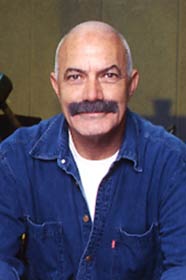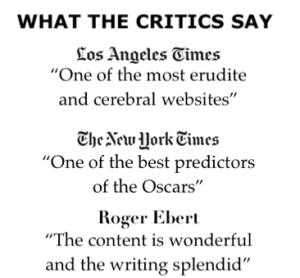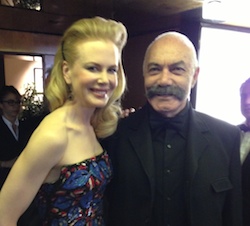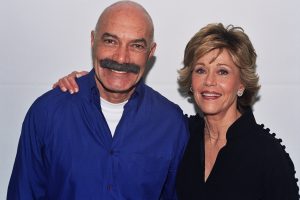After “The Bad and the Beautiful,” Minnelli was assigned to Arthur Freed’s first musical film since “Singin in the Rain,” a backstage musical with songs by Howard Dietz and Arthur Schwartz.
Freed liked to create musicals around composer anthologies, and the Dietz-Schwartz combo held a particular appeal. Along with being a famous lyricist, Dietz was also Loews vice president of MGM publicity. But Dietz and Schwartz had never written a successful book musical’; their specialty was the revue, a form that lost its appeal in Hollywood of the 1940s.
One of the songs from “At Home Abroad,” which was Minnelli’s first Broadway show, was used for the 1931 version of “The Band Wagon,” but didn’t make the final cut. Dietz and Schwartz set the era’s standard for escapism, serving as showcase for such revue stars as Clifton Webb, Libby Hoffman, and Fred and Adele Astaire, who made their final joint appearance in the 1931 “Band Wagon.”
In 1949, Fox produced “Dancing in the Dark,” an unmemorable film that used some of the “Band Wagon” score, with the non-singing stars William Powell and Betsy Drake. Just as the Gershwins jazzy exuberance suggested Gene Kelly, the Dietz-Schwartz’s moody sophistication called for Astaire, for whom the project was conceived. The challenge was to find a plot that would contain successfully the score and star. Writers Betty Comden and Adolph Green concocted a backstage yarn about the making of a Broadway musical. The premise was formulaic, and even banal, but the witty dialogue and inside jokes lifted the text a notch or two above the routine.
Like Minnelli’s Hollywood movie a clef, “The Bad and the Beautiful,” “Band Wagon” was sparked by its allusions to actual showbiz personalities. The protagonist, Tony Hunter, was a heightened portrait of Astaire whose career was in decline in the 1950s. Astaire played an aloof, middle-aged hoofer out of sync with his times. As much as he liked Gene Kelly, Minnelli favored Astaire’s dancing style, holding that Astaire was to the American film musical what Chaplin was to silent comedy. Like Chaplin, Astaire used a trademark, the top hat and cane that identified him immediately and effectively. For the opening image of the film, Minnelli used a close-up of top hat and cane. There was no doubt in Minnelli’s mind that Astaire should flaunt his trademark in the films very first scene.
The inspiration for Jeffrey Cordova was a combination of Orson Welles, George S. Kaufman, and especially the pretentiously pompous actor Jose Ferrer, who had staged himself on Broadway in The Shriek. The real-life model for Hunter’s co-star, Gabrielle Gerard, was French ballerina Zizi Jeanmaire, who made her debut in the Danny Kaye vehicle, Hans Christian Andersen. Under pressure from Minnelli, Freed agreed to discard his working title for the musical and chose The Band Wagon, which summoned up the memory of Astaire’s stage triumph, and deepened the movie’s resonance as a valentine to the legendary dancer. Minnelli set out to direct a backstage musical that would convey the magic of the Shubert Alley. To lend authenticity, he imported two Broadway artists with no prior movie experience: Choreographer Michael Kidd (of “Guys and Dolls” fame) and designer Oliver Smith (“On the Town”).
Minnelli selected a novel cast for the musical. The only familiar face was Oscar Levant, whose malingering off screen personality meshed with the role of the comic-neurotic Lester Martin. As Levants partner, Minnelli chose vivacious Broadway leading lady Nanette Fabray.
Cyd Charisse is considered to be Astaire’s most sensuous and technically expert partner, and indeed, “Band Wagon” is inconceivable without Charisse. However, casting her was not easy. For years, Charisse just decorated MGM musicals, but she was never entrusted with a starring role. While “Band Wagon” disclosed her lack of acting abilities, it also showed what a great song-and-dance personality she was. Minnelli later insisted erroneously on casting Charisse as Douglass seductress in “Two Weeks in Another Town,” and fell flat on his face.
For Jeffrey Cordova, the musicals most colorful part, Minnelli’s first choice was Clifton Webb, a comedian who began his career as dancer. Webb declined the role due to its small size, but he recommended the British actor Jack Buchanan, who was then virtually unknown to American viewers. Buchanan’s wit, energy, and charm made him an ideal foil for Astaire. The backstage format was flexible enough to contain a wide range of Dietz-Schwartz songs. When production began, in September 1952, there were about 20 songs, out of which a dozen made it into the movie. Freed asked the team to write a new number, a rousing anthem a la Irving Berlin’s There’s No Business Like Show Business, and the duo came up with the boisterously melodic, That’s Entertainment. In the 1970s, MGM used the song as the title for a nostalgic series of musical anthologies.
Due to their overlapping duties as art directors, Oliver Smith and studio vet Preston Ames clashed severely. On more than one occasion, Minnelli had to mediate between the bickering artists in front of the cast and crew. The studio felt that cinematographer George Folsey succumbed too readily to Minnelli’s time-consuming attention to detail, and replaced him with Harry Jackson halfway through the shoot to speed up the production. Other problems involved Buchanan, who was ill much of the time, and Levant, who exasperated Minnelli with his constant complaining, on screen and off. In retaliation, Minnelli would cast Levant as a psychotic in his 1956 asylum melodrama, The Cobweb.
Cast:
Tony Hunter (Fred Astaire)
Gabrielle Gerard (Cyd Charisse); songs dubbed by India Adams
Lester Marton (Oscar Levant)
Jeffrey Cordova (Jack Buchanan)
Lily Marton (Nanette Fabray)
Paul Byrd (James Mitchell
Hal Benton (Robert Gist)
Colonel Tripp (Thurston Hall)
Ava Gardner (Herself)
Shoeshine Man (LeRoy Daniels)
Credits
Produced by Arthur Freed; associate Roger Edens
Assistant Director: Jerry Thorpe
Screenplay: Bette Comden, Adolphe Green, adapted from the 1931 Broadway revue, with songs by Arthur Schwartz (music) and Howard Dietz (lyrics)
Cinematography: Harry Jackson, George Folsey
Art Direction: Cedric Gibson, Preston Ames
Set Decoration: Edwin B. Willis; Keogh Gleason
Musical numbers designer: Oliver Smith
Musical direction: Adolphe Deutsch
Orchestrations: Conrad Salinger, Skip Martin, Alexander Courage
Songs by Dietz and Schwartz (please enlist)
Editing: Albert Akst
Costumes: Mary Ann Byberg
Choreography: Michael Kidd
Recording Direction: Douglas Shearer
Hair: Sydney Guilaroff
Makeup: William Tuttle
Running Time: 112 Minutes










